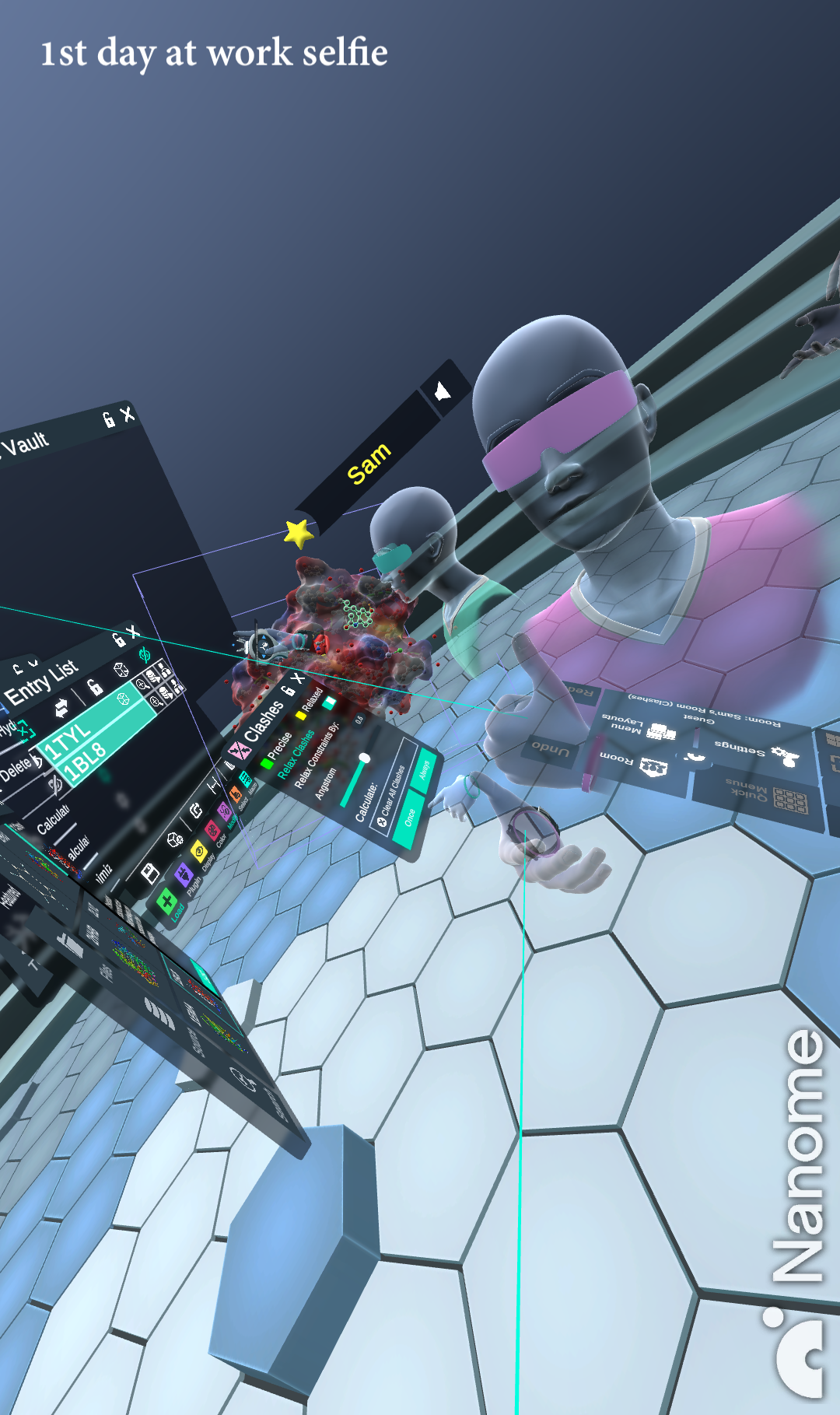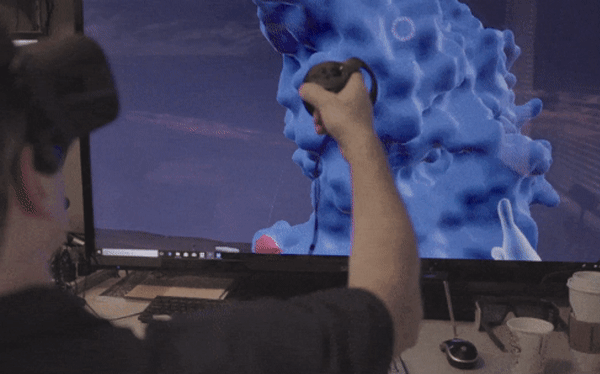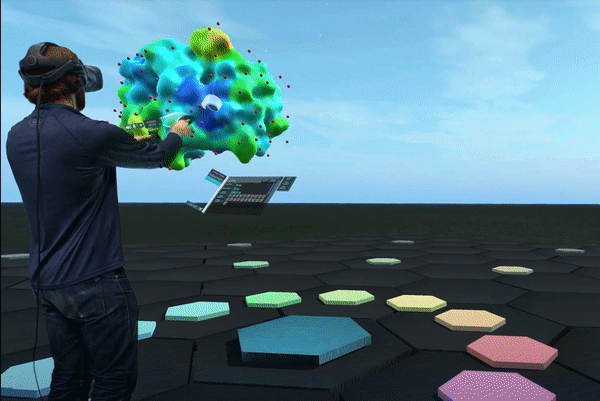Introduction
Nanome develops intuitive virtual reality tools for analyze and design macromolecules with real time collaboration.
Catering to the need of serious scientists, researchers and pharmaceutical developers to visualize, build, and simulate chemical compound, proteins, nucleic acids and more.

For this internship, I worked with product and engineering to re-imagined the drug discovery experience for Medicinal Chemist.
My Role
3D User Interaction and User Experience Designer; UX researcher.
My Responsibilities
I got a chance to research on, and apply design fundamentals and skills to brand new areas of UI within the industry of Virtual Reality software.
Also, I implemented challenging interfaces and workflow that need to be simplified for scientists that will work with it on a day to day basis.
NDA
All of our prototypes and design solutions are currently protected under NDA (Non-Disclosure Agreement). But I am willing to share some high-level thoughts with you :)

Challenges
Information complexity
The area of drug discovery and medicinal chemists’ working language is complicated and exclusively professional.
The traditional tools used for everyday research inevitably inherit such complexity. Although they already got used to the overwhelming interface packed with text and intricate information architecture, it creates barriers that derived from technology, distracting scientists from their work.
Interaction unfamiliarity
Navigations and interaction with components in 3D space pose challenges as there are constraints inherent from VR.
I recognize them and had been addressing them during my work. For instance, adding more visual signifiers of feedbacks to the actions, and reminding myself to bold text and lines to alleviate the readability issues in 3D, etc.
My Work Highlights
I mainly worked on plugins that can integrate current handy external solutions into the Nanome workspace, so that scientists can do calculations, experiment with molecule structures all in one immersive platform.

Understanding user workflow
encapsulate Med-chemists' research needs and painpoints
I kickedoff the research stage by familiarizing myself with users' current research workflow in 2D space. For instance, I sat down (virtually) with med-chemists to learn their docking workflow and the software audits of maintream 2D molecule docking platforms. I observed and evaluated customer usage of the the 2D UI and gather feedback for iterations.

Transitioning experience from 2D to 3D
Embodied cognition makes operations more intuitive
I noticed users’ 2D docking experience is pestered by manually tying in x,y,z coordinates and radius into a txt file defining the receptor’s docking site. And has to import the file to PyMOL in order to see the docking performance and adjust with mouse clicking around. Such experience was constantly interrupted by switching between softwares, and dealing with marking numbers that have precision of many digits after the decimal points.
Transitioning to 3D, I utilized users' embodied interaction to specify the site location through grabbing, rotating, or zooming in/out the molecules and measure distances or angles between atoms with hands. Thus, I streamlined the workflow and simplified the input field on the interface by guiding users to physically choose the site location. That proved to be more intuitive by customer feedbacks and time-saving by 43% through VR testing sessions.

Considerations that increases user productivity seamlessly
More considerations on the desinger side, less on the user side
I was detail-oriented to make sure the plugin can be used effortlessly and consistent with users’ situated knowledge and needs. For instance, when I was designing a slider of the exhaust value of the docking process, I learned from participants that 8 is their most commonly used value, and I made that the default value where the slider resides. And the max, min and units are also designed according to the real-life research situations & need. Besides, I checked with the engineering team to make sure the max value would be practical to load without noticeable lagging considering the computing power.
Takeaways.
HCD still works in 3D problem space
The Human-Centered Design (HCD) process I learned equips me with the mindset, methods, and strategies to approach problems, even the ones in another dimension and complex field. The area of drug discovery and molecule structure is no acquaintance to me, but I tried my best to learn about it through Coursera classes about this field, as well as from interactions with medicinal chemists’ who use Nanome and other traditional 2D drug discovery software. Gradually, I realized I still can strongly apply my strength and HCI design intuition to attack problems in this particular field.
Aiming for Calm Tech
I once fantasized that it is dope tech such as VR that revolutionizes the future of HCI. But when I was creating user experience for a 3D product, I realized that it still came back to the human-centered thinking. It’s a tool to open up immersive interaction opportunities rather than distracting ones. As creators of user experience, I can’t be blinded by the craze for advanced tech and let it override. Instead, just as Tim Cook once said, “Tech should run in the background instead of the foreground,” I aim to make invisible designs that minimize users’ attention.
